Parisian Women: Visit a Belle Epoque Beauty
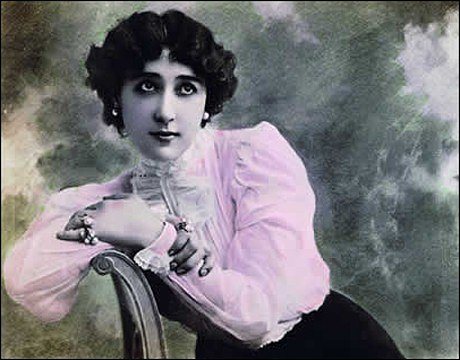
Thu 31 Jan 2013
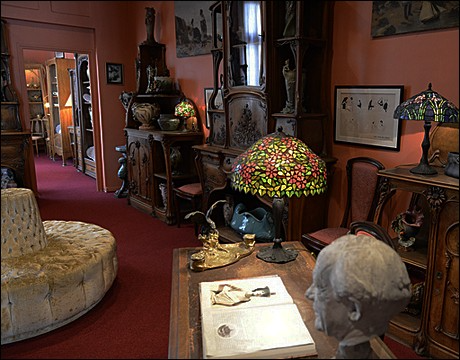
Maxim’s Museum. Photo: Maxim’s.
By 1900, Europe’s female celebrities were les cocottes, Paris-based courtesans whose taste dictated fashion. Figures such as Mata Hari, la Belle Otéro and Cléo de Mérode were seen as ultimate Parisian women. But the work of these grandes horizontales was hardly all horizontal. They served as the trophy companions of powerful men, but also as hostesses and artistic muses. No place were these great beauties seen more frequently than at Maxim’s. The historic restaurant, once their showplace, celebrates the women’s rich lifestyle in its museum.
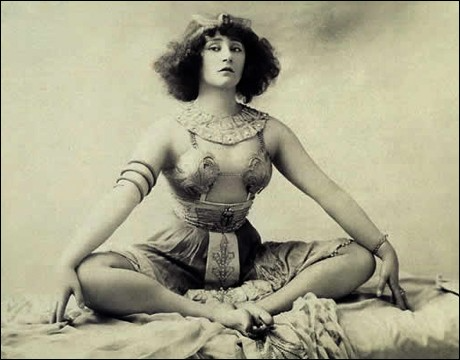
Grandes cocottes were both theatrical and scandalous. Photo: DeAgostini/Leemage, Mairie de Paris.
To visit Maxim’s itself is to enjoy the courtesans’ world, a Paris of velvet, satin corsets and Guimard metro signs. From its red velvet to the Tiffany lamps, the restaurant remains a temple to art nouveau. It is the site of fascinating social histories. “Here is the table where Onassis wooed Maria Callas,” offers the museum’s Pierre-André Hélène. “Before, it was only used for the actor Sacha Guitry, who had to balance affairs with eight different women.”Since 1981, the iconic address has been owned by couturier Pierre Cardin. Having spent 60 years as an art nouveau collector, he is passionate about its history.
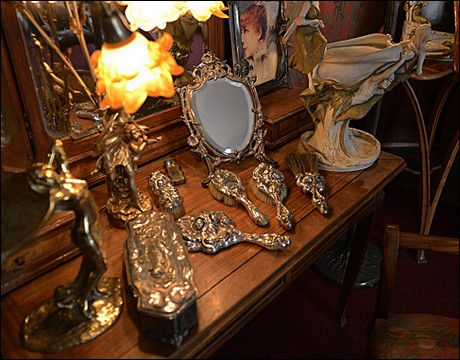
Maxim’s Museum. Photo: Maxim’s.
It was Cardin himself who created the museum. He dubbed its rarities—over 700 artifacts, photos, furnishings, fashions and art—“Le Collection 1900.” Furnished with masterpieces of art nouveau by Hector Guimard, Clément Massier, Emile Gallé and Louis Majorelle (not to mention Tiffany & Co.), it takes up two floors of the gastronomical landmark. All the designs celebrate the female body’s curves—augmented by art nouveau’s famous flowered patterns and iridescence. Plus, it includes the boudoir of a grande cocotte.

Maxim’s Museum. Photo: Maxim’s.
The timing is perfect. First, you can enjoy the silver screen’s view of cocottes in “Paris vu par Hollywood” at the Hôtel de Ville. Then, come here—where you’ll step straight from the painted version into the world. From real photos of the era’s Parisian women to rare works by Sem and Toulouse-Lautrec, Cardin’s personal favorites are on show. The whole apartment might have belonged to Colette’s Chéri or to that courtesan seen at the Musée d’Orsay in Rolla. There’s no need for an audio guide, either. Enjoy Monsieur Hélène! He is informed, intriguing—and witty—when it comes to the era and its femmes fatales.
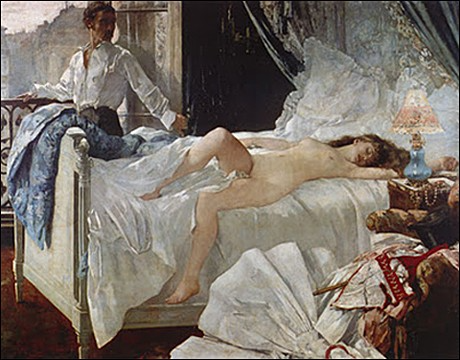
Rolla, Henri Gervex, “L’impressionisme et la mode/Fashion and Impressionism,” Musée d’Orsay.
What were the great Parisian courtesans really like?
Catherine Guigon is the author of Les cocottes, reines du Paris 1900 (Cocottes, Queens of Paris 1900), just published by Parigramme. How does she describe these Parisian women?
“After the Universal Exposition of 1889, the whole world had its eye on Paris. Then, these women were our legendary beauties. The most powerful men of their time sought their acceptance!”
“The grand cocottes had very eccentric, wealthy lives. Although they moved between their own world and high society, they captivated the public as movie stars do today. They were iconically beautiful and those who appeared onstage received glowing reviews. Their love affairs were the talk of Paris and closely followed by the public. A grande cocotte was seen in all the most modern places. Although no bourgeois would have invited her to dine, bourgeois fashion and beauty often came directly from her.”
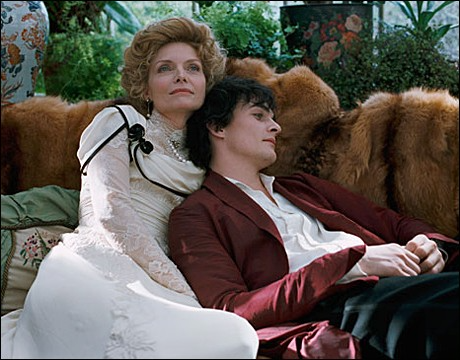
Michelle Pfeiffer as Colette’s grande cocotte in Stephen Frears’s 2009 film Chéri.
“Traces of their era still remain. Cocottes were seen on the stages of Belle Epoque music halls, even the Folies Bergère, the Cirque Summer (now gone), the Olympia and the Casino de Paris. The Moulin Rouge was more for the common cancan dancers. Cocottes also liked to be seen in the Bois de Boulogne; at the races of Auteuil or Longchamps; in the theatres and the cafés of the boulevards—and at restaurants such as La Pérouse and Café Riche Plume. They lived mostly on the right bank, in the west, near Parc Monceau and the Champs-Elysées. Many of the institutions they knew remain, such as the Olympia or the Folies Bergère. But their facades and decor are different now. The only one still ‘in its own juice,’ as we say—as well as the one most directly associated with the cocottes—is Maxim’s. It is a jewel of art nouveau.”

Parisians collected postcards and photos of the famous courtesans (here, la Belle Otéro). Photo: Mairie de Paris.
“How these women managed their lives seems incredibly modern. They viewed their lifestyle as a métier. Certainly, they were courtesans. But they also rose to a level where they could have the luxury of choosing their lovers. Even with the crowned heads of Europe, they imposed their prices—and they required diamonds, mansions and carriages. To create talk about themselves and make their reputations, cocottes also used every kind of communication. They received the press at home and they endorsed perfumes, couturiers and cars. They even guest-edited fashion magazines! Today, they would use Facebook.”
Related Links
Maxim’s Museum
3, rue Royale, in the 8th Arrondissement.
Trips available by reservation (01 42 65 30 47), Wed–Sun, 2 p.m., 3:15 p.m. and 4:30 p.m. (group trips begin at 10 a.m.); admission: 15 euros.
“Paris vu par Hollywood”
Les cocottes, reines du Paris 1900 is out now.
Editor’s note: The first level of membership in the GG2P Travel Club is free! Why not join today and receive our wonderful bimonthly newsletter that’s full of Paris tips and trends?